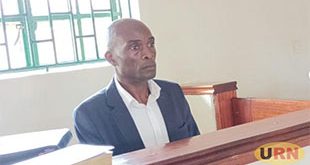
Kampala, Uganda | THE INDEPENDENT | The Katanga trial resumed on Monday with the 13th state witness, Dr. Jaffar Kisitu, a forensic chemist with the Uganda Police Forensic Examination Department. Dr. Kisitu provided key forensic testimony that could play an important role in the trial of Molly Katanga, who is facing charges in connection with the death of her husband, Henry Katanga.
Under cross-examination by defense counsel Elison Karuhanga, Dr. Kisitu spoke about the gunshot residue (GSR) analysis he performed on samples taken from Molly Katanga’s hands and clothing.
Dr. Kisitu explained that for a substance to be identified as GSR, the presence of diphenylamine (DPA) alone is not sufficient. The analysis must also detect DPA’s breakdown products—such as 2-nitro-DPA (2nDPA)—to confirm the residue is consistent with the discharge of a firearm.
Karuhanga referred specifically to two swab samples collected from Molly’s right hand, labeled M2 and M3. One sample tested negative. The other contained DPA and nitroglycerine, but lacked the necessary derivatives.
Based on those results, Dr. Kisitu conceded that the findings could not be classified as gunshot residue.
To emphasize the point, Karuhanga asked Molly to raise her right hand in court. She slowly lifted it. The top half of her pinky finger was gone—a raw and permanent reminder of the events of that fateful morning. The courtroom fell silent.
Karuhanga then posed the question: “On that hand… no GSR… right?” Dr. Kisitu confirmed.
In a dramatic moment, the prosecution witness 12, a Chemical Forensics expert with @PoliceUg, has just told court that THERE WAS NO gunpowder residue found on her right hand.
Court is stunned.
Full updates coming tomorrow. #UgandaVsMollyKatanga https://t.co/f73nGdgR72 pic.twitter.com/ugnnSpKAvU
— Anthony Natif (@TonyNatif) April 14, 2025
This testimony comes alongside earlier forensic evidence that has sparked debate. A forensic expert previously testified that DNA belonging to Molly Katanga was found on the pistol recovered from the scene—specifically around the trigger area. However, the defense has raised questions about the collection and handling of that evidence, including the lack of fingerprint matches and the possibility of secondary DNA transfer.
Concerns have also been raised about potential procedural errors in the forensic process, including whether the correct firearm was examined.
As the trial continues this week, the court will assess the reliability of the forensic evidence presented. The absence of GSR on Molly Katanga’s dominant hand is likely to remain a central point in her defense as they continue to challenge the state’s case.
From the end of March to date, the High Court presided over by Lady Justice Rosette Comfort Kania has been hearing testimony from two witnesses PW11 and PW12 on matters gun related.
First was Mr Derrick Nasawali, the Head of ballistics at @PoliceUg then… https://t.co/f73nGdgR72 pic.twitter.com/KGX4dQWdsa
— Anthony Natif (@TonyNatif) April 15, 2025
 The Independent Uganda: You get the Truth we Pay the Price
The Independent Uganda: You get the Truth we Pay the Price



